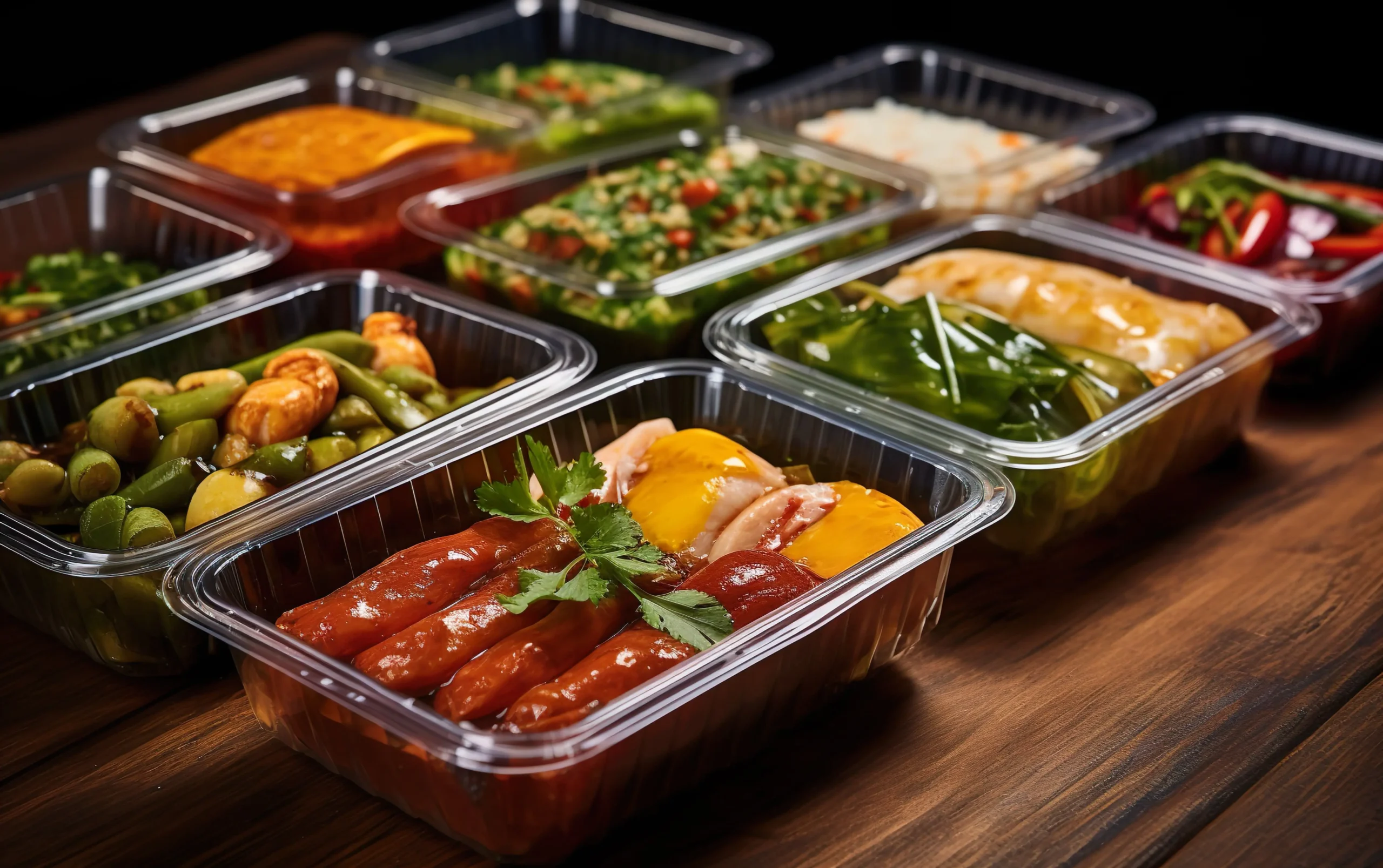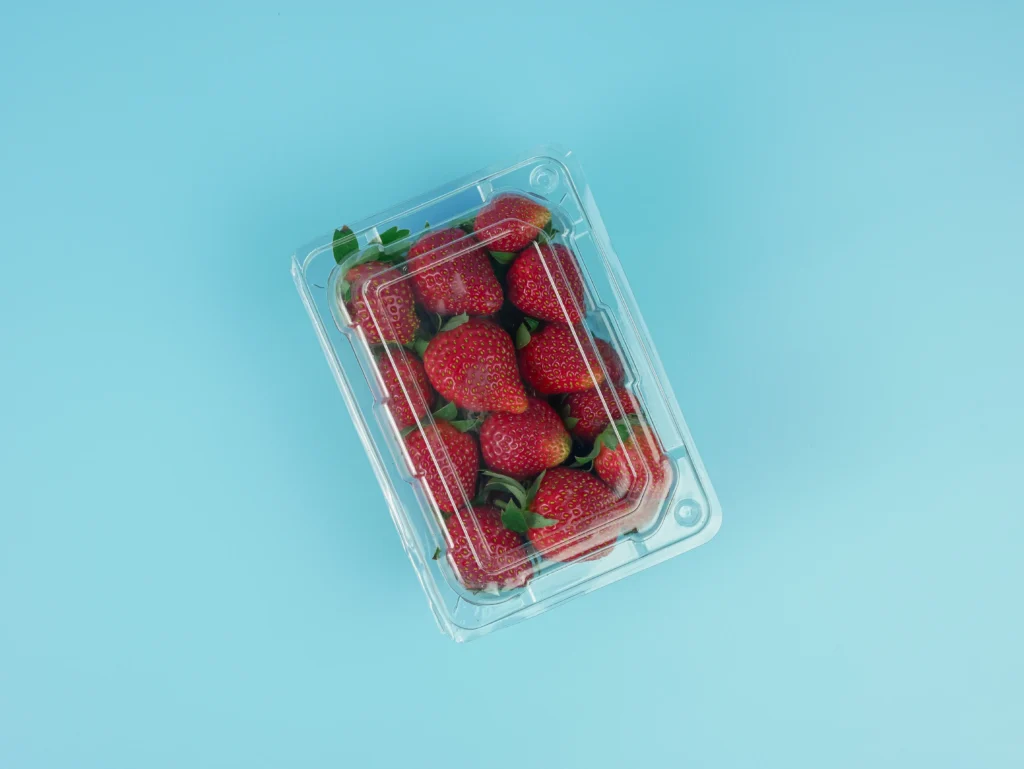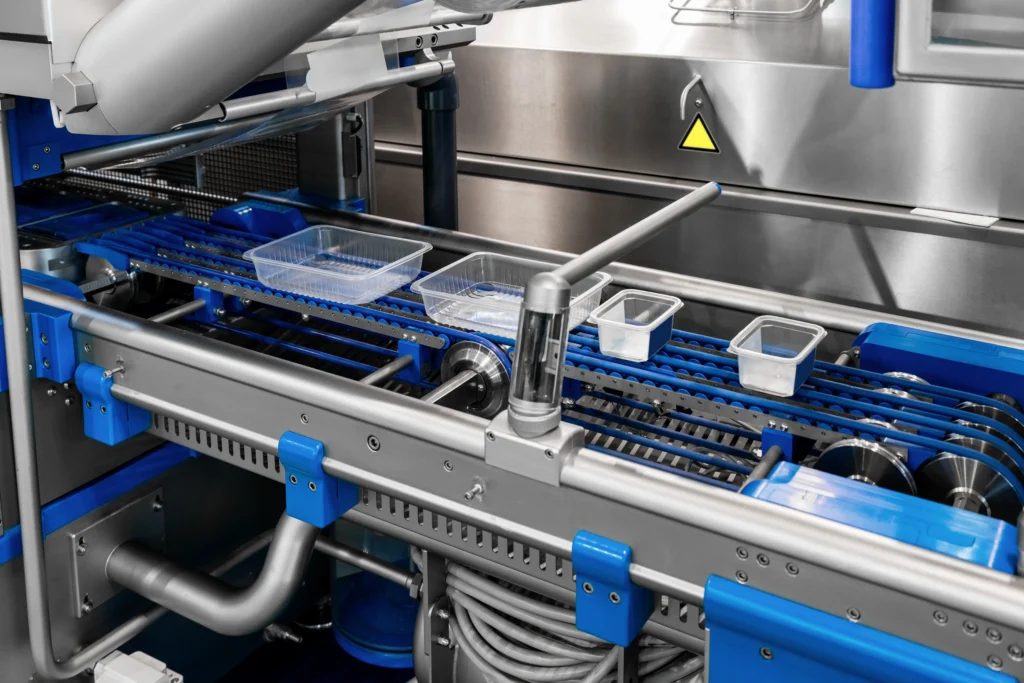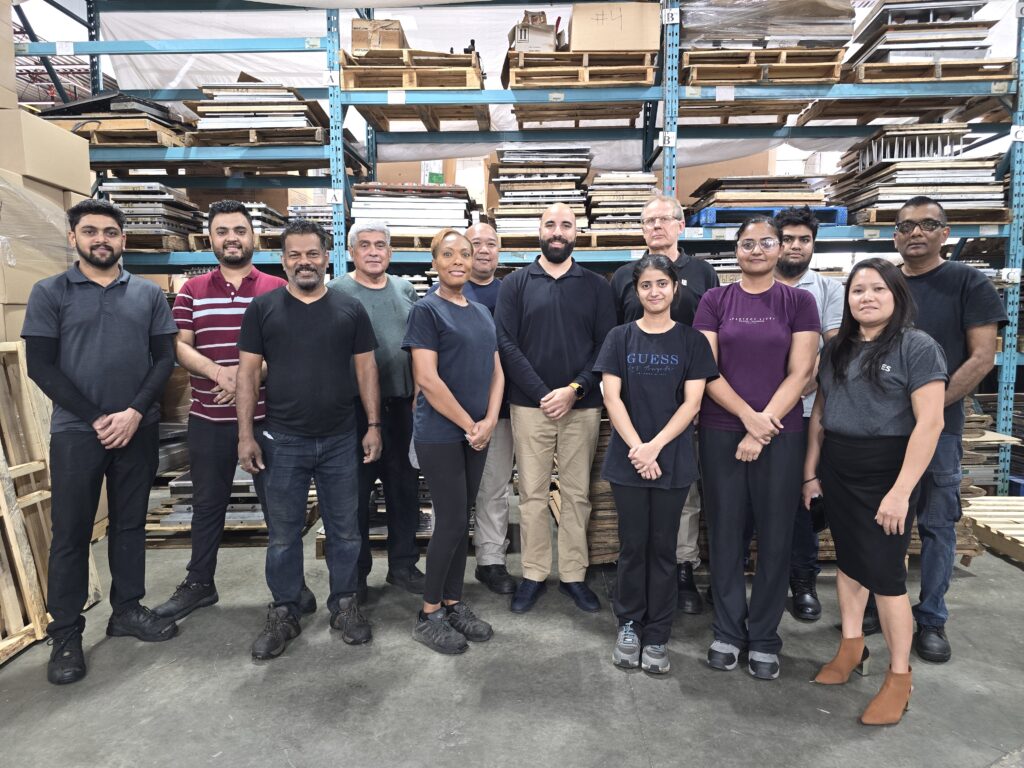Exploring Sustainable Options in Food-Safe Trays

What if packaging processes never evolved, sticking to the outdated materials and practices of the 20th century? The result would be an industry further burdened by waste, inefficiency, and an inability to meet the growing consumer demand for sustainable solutions. Thankfully, the food and beverage industry has evolved significantly as sustainability becomes an increasingly critical consideration for businesses and consumers.
Today, innovation in packaging focuses on sustainable practices that align with industry requirements while delivering solutions tailored to diverse product needs. Food-safe tray production is no exception.
Let’s explore how advancements in sustainable production are reshaping food-safe trays and transforming their role in packaging.
Meeting Complex Packaging Needs with Sustainable Solutions
The diversity of products in the food industry means there’s rarely a one-size-fits-all solution for packaging. Every product comes with its own set of requirements, whether it’s protecting freshness, accommodating unusual shapes, or ensuring durability during transportation. These challenges are particularly critical in the food and beverage sector, where the preservation of food quality is paramount.
To address these needs, food-safe trays are often custom-designed to meet specific packaging requirements. Customization goes beyond simply fitting the product; it ensures the right balance of protection, presentation, and environmental impact. Bespoke solutions are key in meeting the demands of both the business and the environment.
This shift toward customization extends to sustainability. By working closely with manufacturing partners, companies are integrating eco-friendly materials and processes into food-safe tray production without sacrificing safety or quality. Whether it’s incorporating recycled content or utilizing biodegradable options, manufacturers like Elmes are finding ways to deliver sustainable solutions that align with their clients’ evolving needs in food-safe tray production.
These eco-conscious practices also address common challenges such as tight deadlines or limited production runs. The ability to develop flexible, low-volume production runs while maintaining the integrity of the packaging allows manufacturers to meet specific sustainability goals. This combination of adaptability, sustainability, and innovation ensures that food-safe trays are functional and contribute positively to the environment.

Prioritizing Safety and Compliance in Food-safe Tray Production
The food and beverage industry is highly regulated, with safety and compliance at the forefront of every packaging decision. Certifications like ISO 9001:2015 and FSSC 22000 are critical in ensuring that food-safe trays meet strict industry standards for quality and safety.
ISO 9001:2015 is an internationally recognized standard focusing on quality management systems. It sets out criteria for a systematic approach to improving the quality of products and services, ensuring they meet customer and regulatory requirements. The certification demonstrates a company’s ability to consistently deliver products that meet safety, quality, and customer satisfaction standards.
FSSC 22000 is a certification specifically for food safety management systems. It is recognized by the Global Food Safety Initiative (GFSI) and focuses on establishing a robust framework for managing food safety hazards in the production process. The certification validates that food-safe trays are produced under stringent hygiene and safety conditions, confirming their safety for use in the food industry.
In the context of sustainable food-safe tray production, these certifications provide a framework to guarantee that innovative materials and methods do not compromise safety. For example, food-safe trays made from recycled or recyclable materials must still meet stringent food safety guidelines. By adhering to these standards, manufacturers know their products are safe for consumption and reduce their environmental footprint.
Certifications also contribute to the overall integrity of the food packaging process. They require a comprehensive approach to manufacturing, with attention paid to every step, from material selection to the final product. This holistic focus demonstrates how companies meet safety and compliance standards while addressing sustainability goals.
As sustainability in packaging continues to gain momentum, manufacturers are finding ways to incorporate green practices into their production processes without sacrificing the safety or quality that is expected in the food industry. Achieving certifications like ISO 9001:2015 and FSSC 22000 further emphasizes a company’s commitment to both quality and environmental responsibility.
Sustainable Materials: Reducing Waste and Supporting Circular Economies
Sustainability begins with the materials used in food-safe trays. The rise of recyclable plastics, such as PET, and post-consumer recycled content (PCR), has made it possible to reduce the demand for new resources while supporting the concept of circular economies. Circular economies involve reusing materials within the production cycle, rather than relying on raw materials, thus reducing waste and promoting the reuse of resources.
These materials help reduce the environmental footprint of food-safe trays and create packaging solutions that align with consumer expectations. By choosing sustainable materials, food and beverage manufacturers can drive the transition toward a more eco-friendly food packaging system that supports both the environment and the bottom line.
In addition to using recyclable materials, many food-safe trays are now designed to be recyclable themselves. This focus on the end-of-life of the product reduces waste in landfills, ensuring that the trays can be reused and reprocessed into new products. Manufacturers are also exploring biodegradable and compostable materials, which offer an alternative for food producers seeking to reduce their environmental impact. These materials provide a way to maintain the integrity of the product while minimizing the ecological footprint.
Waste reduction is not just limited to the selection of materials. During manufacturing, leftover offcuts can be reprocessed and reused, ensuring that minimal material is lost. By adopting this approach, manufacturers optimize material usage, contributing to both environmental and financial sustainability.

Energy Efficiency in the Manufacturing Process
Sustainable tray production extends beyond material choices. The energy consumed during manufacturing is another significant factor in determining the overall environmental impact. Energy-efficient manufacturing practices, such as the use of renewable energy sources and the optimization of equipment to reduce power consumption, are becoming increasingly common in the food-safe tray production process.
By adopting energy-efficient technologies, manufacturers can lower their carbon footprint while still meeting the demands for high-quality, sustainable packaging. For example, advanced thermoforming equipment allows for greater precision while using less energy. These systems reduce the need for excessive heat and power during the molding process while still maintaining the high standards required for food-safe trays.
Beyond renewable energy, operational improvements—such as optimizing facility layouts and implementing better equipment maintenance practices—also contribute to energy conservation. By adopting these improvements, manufacturers can further reduce their environmental impact and lower production costs. Combining cutting-edge technology with energy-saving measures allows manufacturers to create sustainable products that align with industry standards.
Collaborating for Innovation in Sustainable Design
Collaboration between food and beverage companies and packaging manufacturers is key to driving innovation in sustainable food-safe tray production. By working together, businesses can develop packaging solutions that meet specific requirements, whether accommodating unique product shapes, adhering to branding guidelines, or meeting environmental goals.
One example of successful collaboration is the development of trays that are both thinner and more durable, using less material without compromising strength or performance. This innovation is critical in reducing material usage, lowering transportation emissions, and improving overall sustainability. By co-developing packaging solutions, manufacturers and their clients can strike a balance between functionality and sustainability, ensuring that food-safe trays not only protect the product but also contribute to environmental goals.
In addition to design innovation, collaboration extends to logistics and material sourcing. By aligning their sustainability goals, companies can identify opportunities to streamline the supply chain, reduce emissions, and improve efficiency. These joint efforts guarantee that sustainability is considered throughout the entire lifecycle of food-safe trays, from initial design to the final product.
The Lifecycle Impact of Food-safe Trays
Sustainability in food-safe tray production goes beyond the factory floor. The impact of food packaging extends across the entire lifecycle, including transportation, usage, and disposal. Lightweight trays, for instance, help reduce transportation emissions by lowering fuel consumption and optimizing shipping efficiency. Recyclable trays reduce waste by ensuring that materials can be reused, thus minimizing landfill waste.
Furthermore, manufacturers are mindful of how trays and lids interact with automated systems in food production and distribution. Durable, eco-friendly trays that fit seamlessly into production workflows reduce material waste while supporting operational efficiency. These small but significant decisions collectively contribute to a greener, more sustainable food-safe tray packaging system.

A Sustainable Future for Food-safe Tray Production
The food-safe tray industry is evolving to meet both the demands of the food and beverage sector and the growing need for sustainability. Through innovative materials, energy-efficient processes, and collaborative design, manufacturers are reshaping food packaging to be environmentally responsible and compliant with industry standards.
As sustainability continues to influence packaging, food-safe trays designed with these principles offer companies a way to meet both operational and environmental goals. With continuous innovation, the packaging industry can move toward a future where food safety and sustainability go hand in hand.
The path to more sustainable packaging solutions is a collaborative journey. If you’re ready to take the next step in reducing your environmental impact while maintaining the highest standards of food safety and quality, we’re here to support you.
Reach out to explore how we can create solutions tailored to your needs—safely, responsibly, and sustainably.
